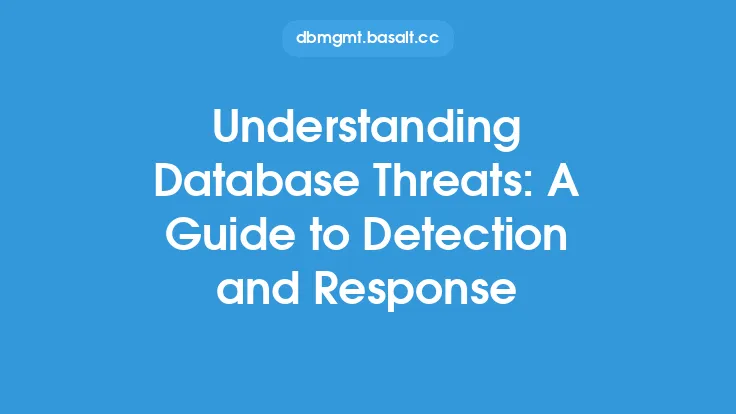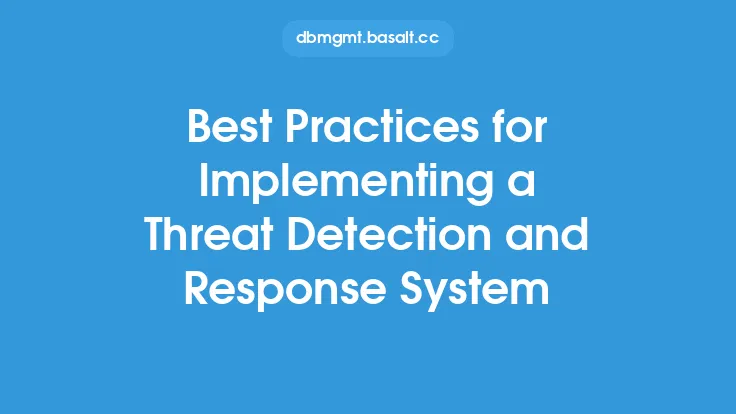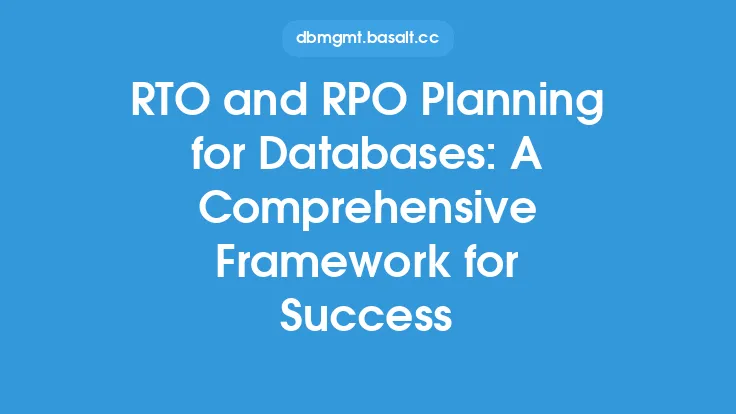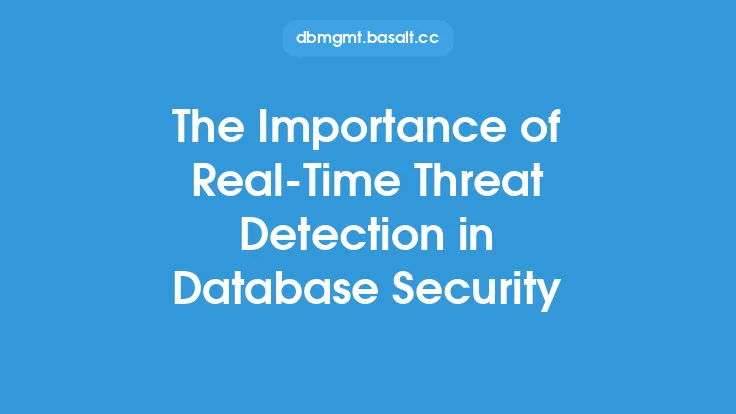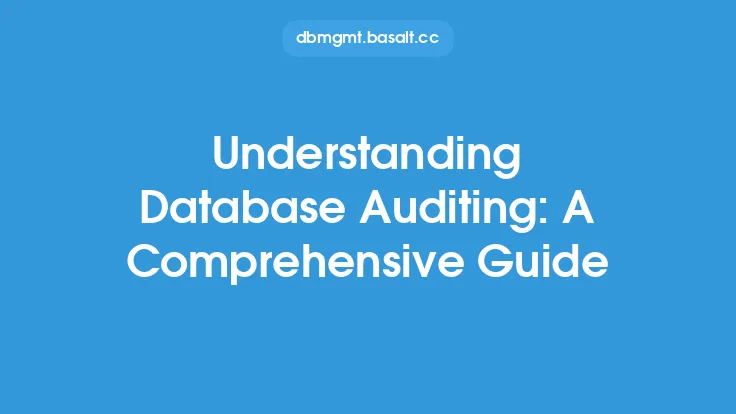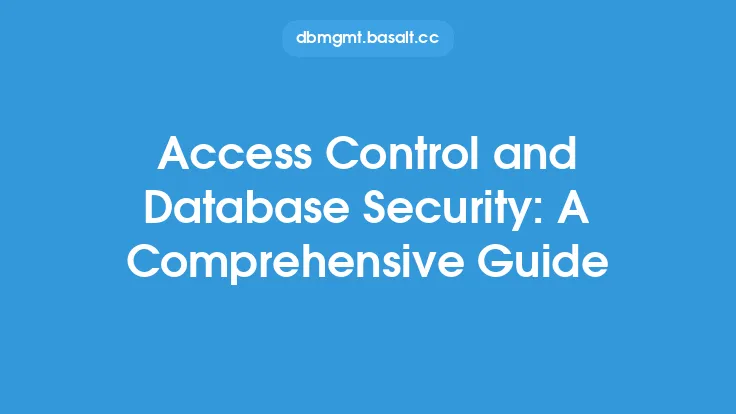Database security is a critical aspect of any organization's overall security posture, and threat detection and response play a vital role in protecting sensitive data from malicious attacks. A comprehensive framework for database threat detection and response is essential to identify, analyze, and respond to potential security threats in a timely and effective manner. This framework should include a combination of people, processes, and technology to ensure that database security threats are detected and responded to quickly, minimizing the risk of data breaches and other security incidents.
Introduction to Database Threat Detection and Response
Database threat detection and response involve the use of various techniques and tools to identify and analyze potential security threats to an organization's databases. This includes monitoring database activity, analyzing logs and network traffic, and using machine learning and other advanced analytics to identify patterns and anomalies that may indicate a security threat. The goal of database threat detection and response is to identify potential security threats in real-time, allowing for quick response and mitigation to prevent or minimize the impact of a security breach.
Key Components of a Database Threat Detection and Response Framework
A comprehensive framework for database threat detection and response should include several key components, including:
- Database monitoring: Real-time monitoring of database activity, including logs, network traffic, and system calls, to identify potential security threats.
- Threat intelligence: The use of threat intelligence feeds and other sources of information to stay informed about emerging threats and vulnerabilities.
- Anomaly detection: The use of machine learning and other advanced analytics to identify patterns and anomalies in database activity that may indicate a security threat.
- Incident response planning: The development of incident response plans and procedures to quickly respond to and mitigate security incidents.
- Security information and event management (SIEM) systems: The use of SIEM systems to collect, analyze, and store log data from various sources, including databases, network devices, and operating systems.
Database Threat Detection Techniques
There are several techniques that can be used for database threat detection, including:
- Signature-based detection: This involves using known signatures of malicious activity to identify potential security threats.
- Anomaly-based detection: This involves using machine learning and other advanced analytics to identify patterns and anomalies in database activity that may indicate a security threat.
- Behavioral analysis: This involves analyzing database activity to identify potential security threats based on behavior, such as unusual login attempts or data access patterns.
- Network traffic analysis: This involves analyzing network traffic to and from the database to identify potential security threats, such as suspicious packets or protocols.
Database Threat Response Strategies
Once a potential security threat has been identified, it is essential to have a response strategy in place to quickly respond to and mitigate the threat. This may include:
- Containment: Taking steps to contain the threat and prevent it from spreading to other parts of the database or network.
- Eradication: Taking steps to eradicate the threat, such as removing malware or closing vulnerabilities.
- Recovery: Taking steps to recover from the security incident, such as restoring data from backups or rebuilding systems.
- Post-incident activities: Conducting post-incident activities, such as incident reporting and root cause analysis, to identify areas for improvement and prevent similar incidents from occurring in the future.
Best Practices for Implementing a Database Threat Detection and Response Framework
There are several best practices that organizations can follow to implement a comprehensive database threat detection and response framework, including:
- Develop a comprehensive incident response plan: This should include procedures for responding to and mitigating security incidents, as well as procedures for post-incident activities.
- Implement a SIEM system: This can help to collect, analyze, and store log data from various sources, including databases, network devices, and operating systems.
- Use threat intelligence feeds: This can help to stay informed about emerging threats and vulnerabilities.
- Implement anomaly detection and behavioral analysis: This can help to identify patterns and anomalies in database activity that may indicate a security threat.
- Conduct regular security audits and risk assessments: This can help to identify vulnerabilities and weaknesses in the database and surrounding network, and prioritize remediation efforts.
Challenges and Limitations of Database Threat Detection and Response
There are several challenges and limitations to database threat detection and response, including:
- Complexity of database environments: Database environments can be complex, with multiple databases, instances, and platforms, making it challenging to implement a comprehensive threat detection and response framework.
- Volume and variety of log data: The volume and variety of log data from databases, network devices, and operating systems can be overwhelming, making it challenging to analyze and identify potential security threats.
- Evolving nature of threats: Threats are constantly evolving, making it challenging to stay informed about emerging threats and vulnerabilities.
- Limited resources: Organizations may have limited resources, including budget, personnel, and technology, making it challenging to implement a comprehensive threat detection and response framework.
Future of Database Threat Detection and Response
The future of database threat detection and response is likely to involve the use of advanced analytics, machine learning, and artificial intelligence to identify and respond to potential security threats. This may include the use of:
- Predictive analytics: To predict potential security threats based on historical data and trends.
- Machine learning: To identify patterns and anomalies in database activity that may indicate a security threat.
- Artificial intelligence: To automate the response to security incidents, such as containment, eradication, and recovery.
- Cloud-based security solutions: To provide scalable and flexible security solutions for cloud-based databases and applications.
- Integration with other security solutions: To integrate database threat detection and response with other security solutions, such as network security and endpoint security, to provide a comprehensive security posture.
